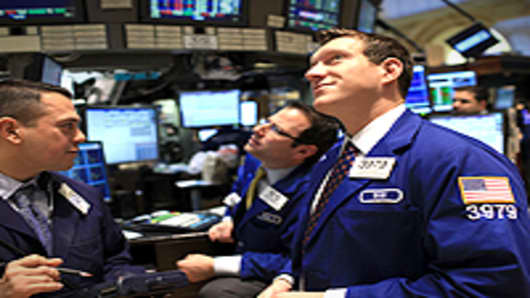The answer could well be that the rally stops when the news gets too good.
“Bull markets are born during the worst of times and they die during the best of times,” says Quincy Krosby, general strategist at Prudential Financial. “The question is, is this the best of times? We don’t think we’re there yet.”
That “yet” part of the equation is the key.
There’s no denying that the news cycle is turning positive for the economy. Housing and manufacturing numbers released this week both showed significant promise, and unemployment at least isn’t getting any worse. Earnings, meanwhile, have been strong, with more companies now beating on both the top and bottom lines.
Yet the rally has started to look tired in February, perhaps a recognition that too much good news will end up being bad news in that it will cause the Federal Reserve to take away its vaunted punch bowl and bring the party to an end.
Traders bet up fed fund futures in Thursday trading, pushing to 78 percent the chance that the Fed will boost interest rates at its December meeting. Of course, December is a long way off and the market traditionally looks ahead about six months. So the day of reckoning could be off a ways.
But the run in data and the likely Fed response is beginning to get notice in other ways.
Should the central bank indicate its easing days are over because the economy is getting better, that could be all she wrote.
“A bullish trend never ends on bearish news. It ends when a bullish news story fails to propel the market to new highs,” says Brian LaRose, strategist at United I-CAP in New York. “That is a possibility for what we’re seeing here—the final throes of this advance. You have seen bullish stories coming out, and what is the market doing? It is just sitting there.”
The Fed’s exit from its easing programs would coincide with an increase in interest rates. Until unemployment stops acting as a restraint on growth, hiking rates is the last thing Fed Chairman Ben Bernanke will want to do.
But he may not have a choice.



